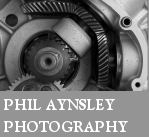




Report from the 1902 Stanley Show
Motor Cycling, 26th November 1902
1904 Parts could be used by other firms to produce machines using Minerva engines.
1910 Entry into market with single model that remained as standard - reflecting quality of materials and design. First model had vertically-mounted 3.5hp engine, chain-driven magneto, sprung forks and excellent finish. Within six months from their launching, BSA's were selling well. The machines were easily distinguishable from rival makes by their yellow and green painted tanks. A TT rear-hub, two-speed model was soon added.
1915 There was a choice between the 85x88 3.5hp model and the 85x98 4.25hp model. This latter machine was offered as being especially suitable for sidecar work. It also had the three-speed BSA gearbox with foot controlled clutch that was introduced in 1914 and a double barrel BSA carburettor. Both models could be had in chain-cum-belt version or in all chain drive with encased chains, which made the machine three pounds and five shillings more expensive.
World War I. During the war, production ceased while they pursued their traditional manufacturing, making guns, but returned quickly following the armistice.
1919 The company made their first V-twins.
Early 1920s. They acquired an engineer and designer from Daimler called Harold Briggs who designed new sporting machines for them, including their popular 493cc ohv Sloper of 1928.
1928 They made their first and only two-stroke, a 175cc unit construction bike, for only one season.
1930s BSA's famous Star series started in the 1930s with the Blue Star singles in 250cc, 350cc and 500cc versions. The Empire Stars followed.
1936 Major changes were introduced by Val Page, who was formerly of Ariel and Triumph, and who revised and simplified models that were no longer economical to produce. His work remained in production until the 1960s. They took over Sunbeam from AMC.
1939 BSA became the largest motorcycle company in the world between the wars. In 1939, the company owned 67 factories across the UK. During the war, they made 126,000 M20 motorcycles - among their other war production.
1944 The company acquired Ariel, and by the end of the war BSA also acquired New Hudson.
1946 Post-war production saw expansion of the company, models using off-road tyres and much more chrome-plating. They announced a new competition model, the 350cc B31.
1947 The BSA Bantam was introduced, and was to become the company's most successful model. Over the following 25 years over a quarter of a million Bantams were produced.
1950s Scooters were gaining popularity. Two models were announced but neither did well.
1951 The company bought Triumph.
1961 Employs 4,300 persons.
1968 Queen's Award to Industry for Export Achievement.
1971 Company reorganisation centred production at the Triumph site and together BSA and Triumph launched ranges which included many new models using common parts, such as forks and wheels. By this time the company was in deep financial trouble as, although an industrial giant, the company proved unable to compete well against the Japanese. The 1971 lineup saw major makeovers, including oil-in-frame 650cc twins. BSA was bought by Norton (owned by Manganese Bronze) and absorbed into the Norton-Villiers-Triumph group in 1971, which managed to design an uncomfortably tall A65 Lightning at Umberslade Hall before BSA collapsed.
1972 BSA had to make major cut-backs, soon to be followed by the demolition of the factory at Small Heath.
1973 The name was finally abandoned and production ended.
1979 The name of BSA survived as mopeds and small motorcycles were assembled from imported components. Many of these machines were built for third-world countries and the services.
For purists, the end of the line had come in 1972.
Note: The UK rights to the BSA name were acquired by the Canadian Aquilini family. BSA Co. was sold and a US company (Bill Colquhuon's BSA Co.) used the name for Rotax-engined military bikes and Yamaha-based Bushman machines for developing nations. In 1991, Andover Norton and BSA Co. merged to create BSA Group, which was taken over in 1994 to form BSA Regal. They announced a new Gold SR using a Yamaha SR400 engine in a Gold Star styled chassis.
BSA Models, Edwardian Era to the 1970s
Source: Graces Guide